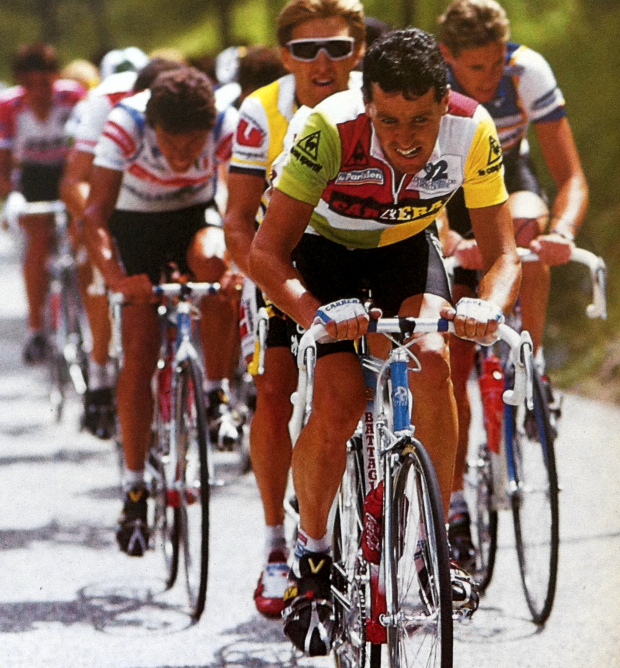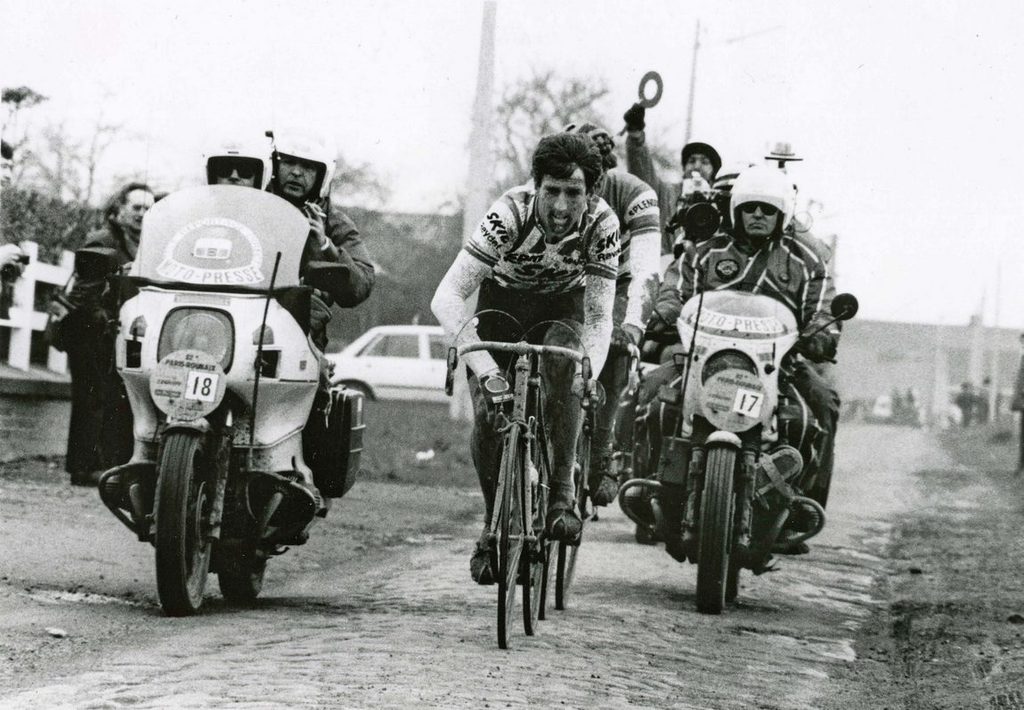The Rise and Fall of the Clipless Pedal

The modern cyclist, as they enter the sport, will find themselves purchasing a set of shoes which contain a cleat that clips into the pedals on their bike. It should come as no surprise, then, that the term we use for the action of engaging shoe to pedal is “clip in”. Obviously, this style of pedals is thusly called the “clipless pedal”. Such a seemingly counter-intuitive name owes itself to the history of the pedals which preceded it.
The name “Clipless Pedal” comes from 1984, when ski binding manufacturer Look invented a style of pedal from which you could release your foot with a sideways twisting motion. Before the Look pedal, riders rode with metal toe clips which were secured to the pedal platform, and lashed their feet to the contraption using a leather strap, named the “toe clip strap”. (Apparently, the same guy who named the toe clip strap wasn’t available when Look was divining the name for the clipless pedal). Since the toe clips were screwed to the pedals, the rider was similarly screwed should they need to disengage from said pedal unexpectedly; Jesper Skibby might have a note or two relating to their safety in the event of a crash on, say, the Koppenberg with cars whipping by.
But somewhere in there lies the secret to the name of these pedals; when Look’s pedals appeared in the peloton on the bikes belonging to Bernard Hinault and Greg LeMond, they were missing the distinct metal toe clips – they were indeed clipless pedals.
Some rides were quick to adopt them. I’m guessing Skibby was among this group, but I’m not sure and finding out would require work. Others were more reluctant; Sean Kelly was the most stubborn of these riders, though I’m guessing that lashing your feet the pedals is more critical when you’re able to scare the cranks off your bike by dispatching an icy stare.
Nevertheless, it raises the question of when the tide turned and the new style of pedal became mainstream. Either the last Grand Tour or last World Championship to be won aboard the predecessor is as good a measure as any, so that brings us to 1987 when Stephen Roche dispatched both the Giro and the Tour – in addition to the World Championships – with the sunlight glinting off his toe clips as he crossed the finish line with arms aloft. In fact, he was also the last rider to take the treble of the Giro, the Tour, and the World Road Race all in one season. Coincidence? There are no coincidences. By 1988, the clipless pedal had risen.
You can get a fairly good gauge of how long a rider has been involved in the sport by their comfort – or, indeed understanding of – the term, which upon contemplation is quite conflicting. With the clipless pedal having fallen into ubiquity, riders who have begun cycling anywhere in the last 15 or so years could be forgiven for calling them “clip-ins” or “clip pedals”. But for those of us who lived through the change, there will always be some part of us which is ever aware of the lack of metal and leather lashing us to the bike. For us, the pedals we ride today will forever be the clipless pedal.


@DavidI
I don’t think the re-run rule was in place at that point, pretty sure this was the reason it was put in place, to make sure events like this didn’t happen again.
@Marcus
better late than never, just found this footage:
http://www.youtube.com/watch?v=NAd5I4ixIZ0&feature=player_detailpage#t=412s
Memorable research: (Death Cleats)
The M71 was a clipless pedal designed by Cino Cinelli and produced by his company in 1971. It used a plastic shoe cleat which slid into grooves in the pedal and locked in place with a small lever located on the back side of the pedal body. To release the shoe a rider had to reach down and operate the lever, similar to the way a racing cyclist had to reach down and loosen the toestrap. The lever was placed on the outside edge of the pedal so that in the event of a fall the lever hitting the ground would release the foot. The pedal was designed for racing, in particular track racing, and because of the need to reach them to unclip they have been referred to as “death cleats”.
@frank What is that on his head?
@DavidI He won’t get far on that thing
Adolescence is a cruel time
I rode with slotted cleats until I purchased my first clipless setup in 1998.
That happened only because I finally wore out my last pair of old-school Duegis, and the only shoes available at my LBS were these crazy stiff plastic soled things with three threaded holes in the bottom.
I was a bit bummed at first, but just as with my first ever dual control lever equipped bike (purchased later that same year), they won me over pretty quickly.
It still drives me crazy to hear people refer to clipless pedals as “clips”, and to toe clips as, ugh, “stirrups”. The parents of BMX racers from the southern and midwest states are the worst offenders.
@frank
As an old-timer, I did all of those except trim the straps. Never thought of it. The coloured end buttons were a wanna-be customizer’s dream (I still have half-a-dozen). Miles